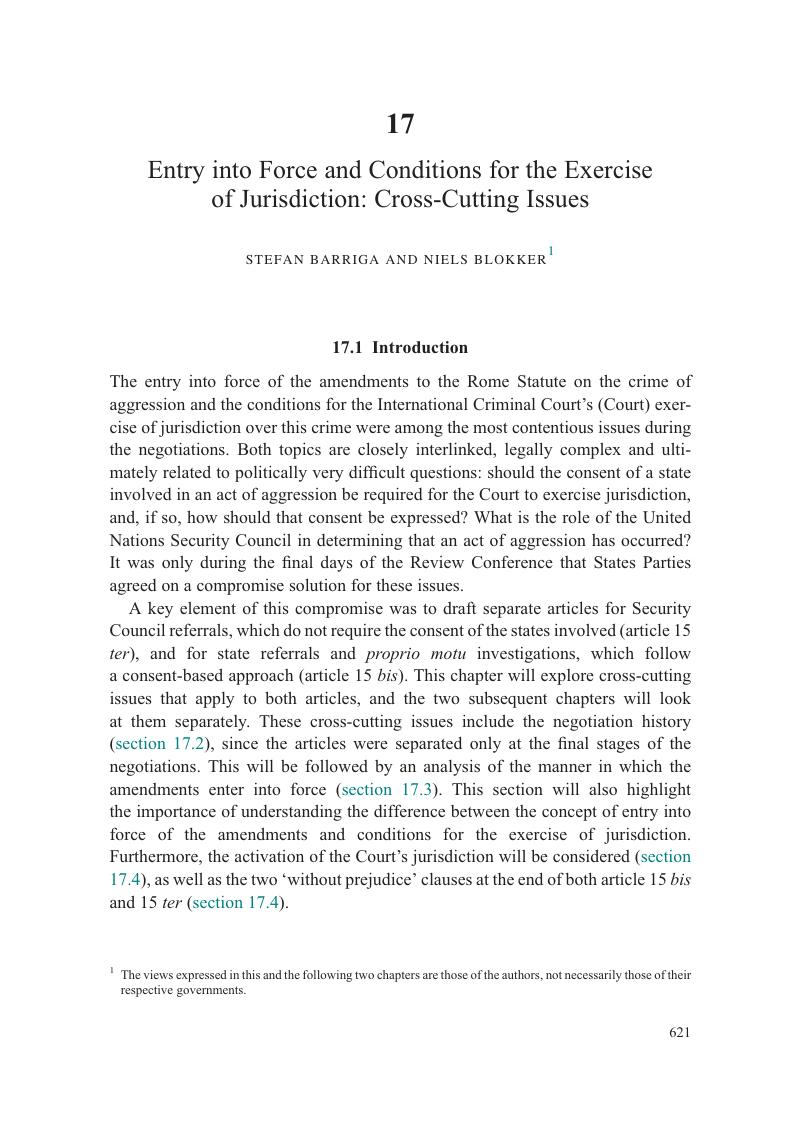Book contents
- The Crime of Aggression: A Commentary
- Crime of Aggression Library
- The Crime of Aggression: A Commentary
- Copyright page
- Contents
- Contributors
- Foreword
- Acknowledgements
- Introduction: The Crime of Aggression and the International Legal Order
- Part I History
- Part II Theory
- Part III Crime of Aggression under Current International Law
- 13 Interpreting the Crime of Aggression
- 14 The State Conduct Element
- 15 Individual Conduct
- 16 General Principles of International Criminal Law
- 17 Entry into Force and Conditions for the Exercise of Jurisdiction: Cross-Cutting Issues
- 18 Conditions for the Exercise of Jurisdiction Based on Security Council Referrals
- 19 Conditions for the Exercise of Jurisdiction Based on State Referrals and Proprio Motu Investigations
- 20 Immunities
- 21 The Crime of Aggression, Domestic Prosecutions and Complementarity
- 22 The Judicial Function of the Pre-Trial Division
- 23 Victims of the Crime of Aggression
- Part IV Crime of Aggression and National Law
- Part V Crime of Aggression and the Future World Order
- Epilogue. The Long Journey to Kampala: A Personal Memoir
- Index
- References
17 - Entry into Force and Conditions for the Exercise of Jurisdiction: Cross-Cutting Issues
from Part III - Crime of Aggression under Current International Law
Published online by Cambridge University Press: 06 April 2017
- The Crime of Aggression: A Commentary
- Crime of Aggression Library
- The Crime of Aggression: A Commentary
- Copyright page
- Contents
- Contributors
- Foreword
- Acknowledgements
- Introduction: The Crime of Aggression and the International Legal Order
- Part I History
- Part II Theory
- Part III Crime of Aggression under Current International Law
- 13 Interpreting the Crime of Aggression
- 14 The State Conduct Element
- 15 Individual Conduct
- 16 General Principles of International Criminal Law
- 17 Entry into Force and Conditions for the Exercise of Jurisdiction: Cross-Cutting Issues
- 18 Conditions for the Exercise of Jurisdiction Based on Security Council Referrals
- 19 Conditions for the Exercise of Jurisdiction Based on State Referrals and Proprio Motu Investigations
- 20 Immunities
- 21 The Crime of Aggression, Domestic Prosecutions and Complementarity
- 22 The Judicial Function of the Pre-Trial Division
- 23 Victims of the Crime of Aggression
- Part IV Crime of Aggression and National Law
- Part V Crime of Aggression and the Future World Order
- Epilogue. The Long Journey to Kampala: A Personal Memoir
- Index
- References
Summary

- Type
- Chapter
- Information
- The Crime of AggressionA Commentary, pp. 621 - 645Publisher: Cambridge University PressPrint publication year: 2016
References
Primary Sources
Secondary Sources
- 1
- Cited by



